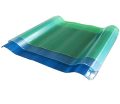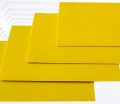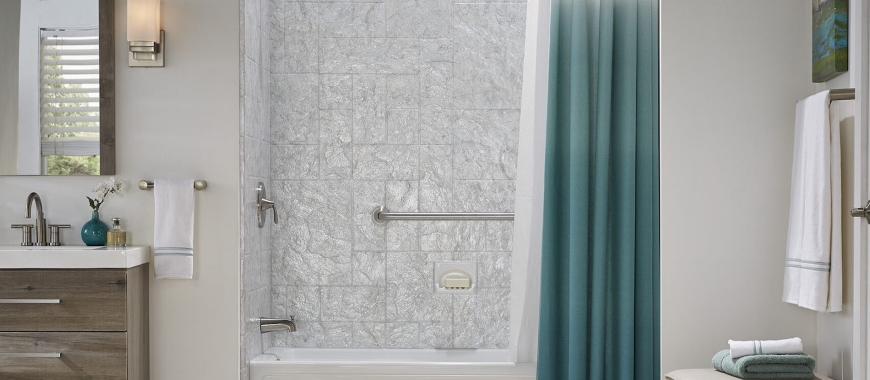
When choosing materials for construction or renovation projects, the decision between acrylic vs fiberglass sheets is crucial. The material impacts durability, aesthetics, and overall cost. Acrylic sheets tend to last longer, offering higher resistance to damage and scratches, while fiberglass sheets are known for being lightweight and budget-friendly. In bathroom installations or roofing, selecting the right material directly influences longevity and maintenance needs.
In recent years, the popularity of acrylic vs fiberglass sheets has risen. Both are affordable, easy to install, and provide reliable alternatives to traditional materials like porcelain or stone. Their versatility in design and practicality make them increasingly preferred for modern home and commercial building projects. Acrylic vs fiberglass sheets differ in durability and cost, with acrylic being durable and scratch-resistant, while fiberglass is lightweight and affordable.
Similarities Between Acrylic and Fiberglass Sheets
Lightweight and Easy to Install
Both acrylic vs fiberglass sheets offer lightweight construction, making them easier to handle compared to heavier materials like stone or porcelain. Their ease of installation reduces labor costs and shortens project timelines. This makes them ideal for DIY projects or professional installations where efficiency is a priority.
Affordability
The cost-effectiveness of acrylic vs fiberglass sheets appeals to budget-conscious consumers. Both materials are more affordable than traditional materials like porcelain, with a variety of price points depending on quality. This flexibility allows customers to select a material that meets their financial and project requirements without sacrificing quality.
Versatility in Applications
Both acrylic vs fiberglass sheets serve versatile purposes. They can be used in various installations such as bathroom walls, roofs, and countertops. Their adaptability makes them a popular choice for projects ranging from residential to commercial applications, ensuring broad usability across different needs.
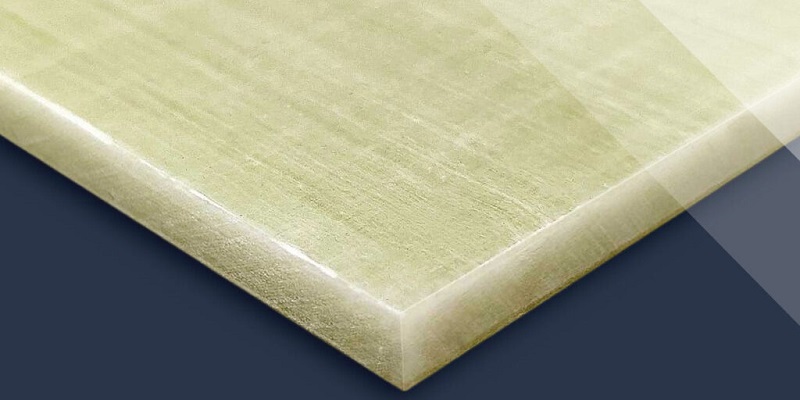
Low Maintenance Requirements
Maintaining acrylic vs fiberglass sheets is relatively easy. Neither material requires heavy-duty cleaning solutions or time-consuming maintenance routines. A simple cleaning regimen keeps both looking new and lasting longer. Acrylic, however, offers slightly better resistance to stains and discoloration.
Durability in Everyday Use
In everyday applications, acrylic vs fiberglass sheets are durable enough to withstand wear and tear. Although acrylic offers more resistance to scratches, fiberglass can still hold up under regular use. Both materials remain effective for various environments, including kitchens, bathrooms, and outdoor spaces.
Environmental Impact
Consumers also appreciate the reduced environmental footprint of acrylic vs fiberglass sheets. Both materials are lighter and require fewer resources to produce and transport than heavier alternatives. This makes them an eco-friendly option for those looking to minimize their environmental impact during construction or renovation projects.
Cost-Effectiveness of Using FRP Grating with Chequered Plate
Differences Between Acrylic and Fiberglass Sheets
When comparing acrylic vs fiberglass sheets, several key differences stand out. These differences range from customization options and durability to cost and maintenance needs. Understanding these distinctions helps homeowners, builders, and designers make informed choices for their projects. Below, we explore five essential differences between these materials in greater detail.
Customization Options
Acrylic Sheets
Acrylic sheets offer extensive customization, making them ideal for a wide variety of applications. Homeowners and designers can choose from numerous colors, textures, and finishes to suit their aesthetic preferences. Acrylic sheets can be shaped and molded into custom designs, allowing for more creative freedom. This versatility is especially useful in projects requiring specific dimensions, such as bathroom walls or decorative panels.
In addition to customization in appearance, acrylic sheets are often reinforced with fiberglass for added strength. This reinforcement enhances their structural integrity, making them suitable for both residential and commercial applications. The combination of beauty and durability makes acrylic a popular choice for high-end projects where appearance and longevity are crucial. Whether for intricate shower enclosures or sleek kitchen backsplashes, acrylic vs fiberglass sheets allow for greater flexibility in design and finish.
Fiberglass Sheets
Fiberglass sheets, while durable and effective, offer fewer customization options than acrylic sheets. Fiberglass typically comes in more limited color and texture choices, making it less adaptable to highly customized designs. However, fiberglass is highly effective in large-scale installations where durability and cost-effectiveness matter most. In applications like roofing or industrial settings, the focus is often on functionality rather than appearance.
Fiberglass sheets are manufactured by layering polyester resin and woven glass fibers, creating a strong, lightweight material. While this process provides excellent durability, the finished product is less customizable than acrylic. Despite this limitation, acrylic vs fiberglass sheets still both serve specific purposes, depending on the project’s needs. If customization is less important, fiberglass offers a more budget-friendly alternative.
Durability
Acrylic Sheets
Acrylic sheets are known for their durability, making them ideal for high-traffic areas and frequent use. One of the primary benefits of acrylic is its resistance to scratches, dents, and other forms of wear and tear. Acrylic also retains its color over time, making it less prone to fading or discoloration, even when exposed to sunlight or moisture. This makes acrylic sheets a great option for outdoor installations or areas that receive a lot of direct sunlight.
Another aspect of durability in acrylic sheets is their resilience against chemicals. Acrylic can withstand exposure to many household cleaners and chemicals without suffering damage. This resistance helps maintain the material’s appearance and extends its lifespan, making it a cost-effective option over time. When comparing acrylic vs fiberglass sheets, acrylic tends to last longer and require fewer repairs or replacements.
Fiberglass Sheets
Fiberglass sheets, while durable, are generally more susceptible to wear and tear compared to acrylic. Fiberglass tends to scratch more easily, and its color can fade over time, especially when exposed to sunlight or moisture. This makes fiberglass less suitable for areas that experience frequent use or harsh environmental conditions.
However, fiberglass sheets have their own durability benefits. They are highly resistant to corrosion, making them ideal for environments where water exposure is a concern. Fiberglass is also lightweight, which helps reduce strain on structural elements in larger installations. Though acrylic vs fiberglass sheets both offer durability, fiberglass may require more frequent maintenance or replacement due to its susceptibility to damage.
Maintenance and Repair
Acrylic Sheets
Acrylic sheets are relatively low-maintenance. Their non-porous surface makes them easy to clean, requiring only a damp cloth or mild cleaner for everyday maintenance. Acrylic’s resistance to scratches and stains also means fewer repairs over time. This makes it a preferred option for homeowners and businesses that want to minimize upkeep.
In the event of damage, acrylic is typically easier to repair than fiberglass. Minor scratches can often be buffed out, and deeper damage can be repaired with specialized acrylic kits. The ease of maintenance and repair makes acrylic vs fiberglass sheets a practical choice for those seeking a long-lasting, low-maintenance material.
Fiberglass Sheets
Fiberglass sheets, on the other hand, require more frequent maintenance. Their porous surface can absorb dirt and stains, which may necessitate more thorough cleaning routines. Additionally, fiberglass is more prone to scratching, and repairs can be more involved than with acrylic.
While fiberglass repairs are relatively affordable, they are more common than with acrylic. Over time, homeowners or business owners may find themselves needing to patch or replace sections of fiberglass more frequently. Despite its affordability, acrylic vs fiberglass sheets shows that fiberglass may incur higher long-term maintenance costs.
Cost
Acrylic Sheets
Acrylic sheets tend to be more expensive than fiberglass, but their higher upfront cost is often offset by their durability and low maintenance needs. Because acrylic requires fewer repairs and lasts longer, the overall cost of ownership is lower over time. For projects that demand both aesthetic appeal and long-term reliability, acrylic offers excellent value.
The price of acrylic sheets varies depending on the thickness, finish, and level of customization. While the initial investment may be higher, the long-term savings in maintenance and repair costs make acrylic vs fiberglass sheets a worthy consideration for homeowners and businesses.
Fiberglass Sheets
Fiberglass sheets are generally more affordable than acrylic sheets, making them a popular choice for budget-conscious projects. Cheap fiberglass sheets, in particular, further enhance the appeal for those seeking to minimize initial expenses. Their lower upfront cost appeals to those seeking to minimize initial expenses. However, as mentioned earlier, fiberglass may require more frequent repairs and replacements, which can increase the total cost over time.
In industrial or large-scale installations, where cost is a primary concern and aesthetic considerations are secondary, fiberglass offers a more economical solution. Acrylic vs fiberglass sheets both have their respective price points, but fiberglass is usually the more budget-friendly option for large projects.
Environmental Impact
Acrylic Sheets
Acrylic sheets have a relatively low environmental impact due to their long lifespan and reduced need for replacement. The energy required to produce and transport acrylic sheets is less than that of heavier materials like porcelain or stone. Additionally, acrylic can be recycled in certain facilities, further reducing its environmental footprint. For eco-conscious consumers, acrylic vs fiberglass sheets presents acrylic as the more sustainable choice.
Fiberglass Sheets
Fiberglass sheets, while lightweight and relatively easy to manufacture, are more difficult to recycle. The production process involves chemicals and resins that may not break down easily in landfills. This can increase the environmental impact of fiberglass over time, especially when frequent replacements are necessary. While acrylic vs fiberglass sheets shows both options are more eco-friendly than traditional materials, acrylic has a slight edge in sustainability.
Acrylic vs Fiberglass Sheets Price
When comparing acrylic vs fiberglass sheets, price differences become a significant factor in decision-making. Acrylic sheets generally cost more upfront, but their long-term benefits often justify the higher price tag. Fiberglass sheets, on the other hand, are more affordable initially, though they may incur higher costs over time due to maintenance and replacement needs.
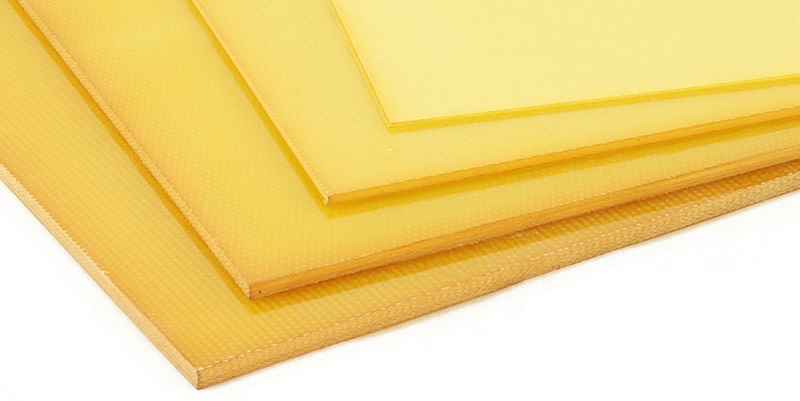
Acrylic Sheets: Higher Initial Investment, Lower Long-Term Costs
Acrylic sheets cost more than fiberglass primarily due to their superior durability and resistance to damage. The longer lifespan of acrylic sheets, combined with their resistance to scratches, dents, and fading, leads to fewer replacements and repairs over time. This makes acrylic a great option for projects where long-term reliability is important, such as bathroom installations, countertops, and outdoor panels.
The higher price of acrylic sheets also reflects the material’s customizability. Acrylic comes in a variety of finishes, colors, and textures, allowing homeowners and designers to create unique, aesthetically pleasing spaces. This customization, paired with longevity, makes the initial investment worthwhile for those seeking a high-quality finish.
Fiberglass Sheets: Lower Initial Cost, Higher Long-Term Maintenance
Fiberglass sheets are typically less expensive upfront. This affordability makes them appealing to homeowners and contractors looking for cost-effective solutions for larger installations or budget-conscious projects. Wholesale fiberglass sheets further enhance this appeal by offering bulk purchasing options that lower the per-unit cost, making them an even more economical choice for large-scale applications. Fiberglass sheets are also lightweight, which can reduce shipping and labor costs during installation.
However, fiberglass sheets tend to wear out faster than acrylic sheets. They are more prone to scratches, fading, and general wear and tear, which can lead to higher maintenance costs over time. Fiberglass sheets may need more frequent repairs or replacements, particularly in high-traffic areas or environments where they are exposed to moisture or direct sunlight. While the initial cost of fiberglass is lower, these additional expenses should be factored in when considering long-term project costs.
Cost and Price Comparison: Acrylic vs Fiberglass Sheets
| Material | Average Initial Cost (per square foot) | Lifespan | Maintenance Needs | Long-Term Costs |
|---|---|---|---|---|
| Acrylic Sheets | $7 - $15 | 15-20 years | Minimal (easy to clean, rarely replaced) | Lower due to longevity, fewer repairs |
| Fiberglass Sheets | $4 - $10 | 7-10 years | Moderate (prone to scratches, fading) | Higher due to frequent repairs/replacement |
Factors Influencing the Price of Acrylic vs Fiberglass Sheets
Thickness and Quality
Both acrylic vs fiberglass sheets come in different thicknesses and grades, which impact the overall price. Thicker, higher-quality sheets tend to cost more upfront but offer greater durability. For projects where strength and longevity are essential, investing in higher-quality materials can reduce long-term costs.
Customization and Finish
Acrylic sheets offer more customization options, which increases their price. Custom textures, colors, and finishes make acrylic more expensive but also more versatile in design. Fiberglass sheets, with fewer customization options, tend to be more affordable but less adaptable for creative or unique designs. If customization is crucial for a project, the added cost of acrylic may be worth the investment.
Project Size and Scope
Large-scale projects can significantly impact the overall cost of acrylic vs fiberglass sheets. Since fiberglass sheets are generally cheaper, they are often preferred for bigger installations like industrial buildings or large roofing areas. Acrylic sheets, being more expensive, are typically used in smaller, high-end installations where durability and aesthetics are prioritized. Balancing the size of the project with material costs helps in choosing the best option.
The Synergy of Fiberglass Over Steel in Roofing Solutions
Maintenance of Acrylic vs Fiberglass Sheets
Proper maintenance is crucial in determining the long-term performance of acrylic vs fiberglass sheets. While both materials offer durability, their maintenance needs differ significantly. Understanding these differences helps in selecting the right material for projects that prioritize ease of care and longevity.
Acrylic Sheets
Acrylic sheets offer a low-maintenance solution, making them ideal for homeowners and businesses seeking convenience. The non-porous surface of acrylic resists dirt and grime, so cleaning requires only a simple wipe-down with a damp cloth. Unlike materials like wood or porous stone, acrylic doesn’t trap debris, meaning less time and effort spent on routine maintenance.
Acrylic also resists staining, making it a great choice for areas exposed to water, spills, or chemicals. Kitchens, bathrooms, and outdoor installations benefit from this stain resistance, as acrylic maintains its clean appearance with minimal effort. Additionally, acrylic sheets don’t require special cleaning products; mild soap and water work just fine.
In terms of repairs, acrylic tends to be more forgiving. Minor scratches can often be buffed out without needing professional intervention. For deeper damage, repair kits specifically designed for acrylic surfaces can restore the sheet to its original condition. Since acrylic is more resistant to wear, repairs and replacements are infrequent, which helps reduce long-term maintenance costs.
Acrylic’s durability also extends to its color retention. Unlike other materials that may fade over time, acrylic maintains its vibrant appearance for years, even when exposed to direct sunlight. This makes acrylic sheets perfect for both indoor and outdoor installations where aesthetics matter.
Fiberglass Sheets
Fiberglass sheets, though cost-effective upfront, typically require more maintenance than acrylic sheets. The porous surface of fiberglass makes it more prone to absorbing dirt and stains. Regular cleaning with stronger detergents or scrubbing is often necessary to keep fiberglass surfaces looking fresh. Unlike acrylic, fiberglass surfaces can degrade more quickly if not maintained properly.
Fiberglass sheets are also more susceptible to scratches and dents. Everyday use, especially in high-traffic areas, can lead to visible signs of wear. While a fiberglass sheet repair kit can be used to address these issues, the results may not always restore the surface to its original condition. Over time, repeated repairs can contribute to a worn and uneven appearance, increasing the maintenance demands of fiberglass sheets compared to more durable materials like acrylic.
Fiberglass’s tendency to fade, particularly in outdoor settings, is another maintenance consideration. Constant exposure to sunlight can cause the material to lose its color more quickly than acrylic. If aesthetics are a priority, regular touch-ups or repainting may be necessary to keep fiberglass sheets looking fresh. This ongoing maintenance increases the long-term cost of fiberglass, despite its lower initial price.
Additionally, fiberglass sheets can be more prone to cracking and warping over time, especially in extreme temperatures or harsh environments. In areas with frequent temperature fluctuations, fiberglass may require extra care to prevent damage. Regular inspections and preventive measures can help mitigate these issues, but they add to the overall maintenance burden.
Acrylic vs Fiberglass Sheets in Tubs and Showers
When discussing acrylic vs fiberglass sheets in tubs and showers, key differences in durability, customization, and maintenance come into play. Both materials offer unique advantages, but they serve different needs depending on your preferences and the demands of the space. Below, we explore the pros and cons of each material for tubs and showers, including a comparison with porcelain, another popular option.
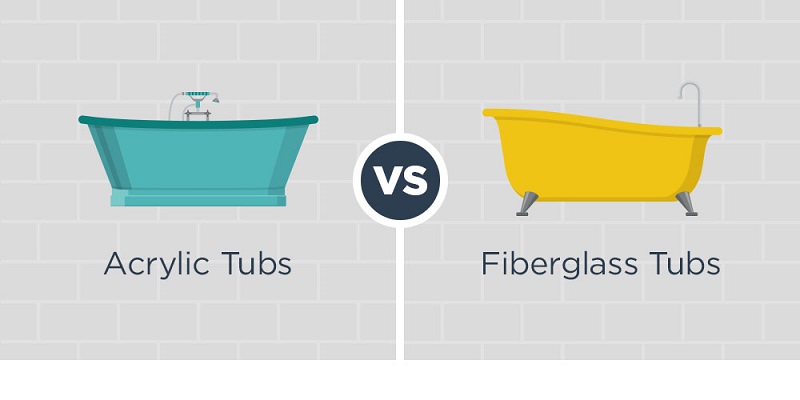
Acrylic Tub vs Fiberglass Tub
Acrylic tubs stand out for their durability and superior resistance to scratches and dents. The material holds up well in high-traffic bathrooms, making it ideal for families or busy households. Acrylic tubs are less likely to chip or crack under pressure, ensuring a longer lifespan compared to fiberglass. This durability reduces the need for frequent repairs, saving homeowners time and money over the years.
In terms of customization, acrylic offers a wide range of color, size, and design options. Manufacturers can mold acrylic sheets into various shapes and sizes, allowing homeowners to create customized tubs that fit their style and bathroom layout. The versatility of acrylic tubs makes them popular for both contemporary and traditional bathroom designs.
Acrylic Tub Pros
- Good heat retention
- Non-porous and easy to clean
- Repels wells against moisture and mildew
- Lightweight
Acrylic Tub Cons
- Prone to scratches, especially with non-compatible cleaners
- Prone to flexing
- Fewer high-end options
Fiberglass tubs, while more affordable upfront, do not offer the same level of durability as acrylic. Fiberglass is prone to scratches, dents, and color fading over time. In high-use environments, this can lead to more frequent repairs or even the need for replacement. However, fiberglass tubs and surrounds are lightweight and easy to install, which reduces labor costs during the installation process.
Fiberglass tubs also offer fewer customization options compared to acrylic. Manufacturers typically mold fiberglass into standard sizes and shapes, limiting the design flexibility. For budget-conscious homeowners, fiberglass can still be a practical choice, especially for guest bathrooms or spaces with less frequent use.
For those looking for a balance between durability and cost, fiberglass-reinforced acrylic tubs provide a hybrid solution. These tubs combine the strength of fiberglass with the aesthetic and long-lasting benefits of acrylic. Homeowners enjoy the best of both worlds: durability, style, and cost-effectiveness.
Fiberglass Tubs Pros
- Affordable
- Lightweight
Fiberglass Tubs Cons
- Thin material that can easily chip or fade
- Less durable
Acrylic Tub vs Fiberglass Tub: Same
Here is a list of the few similarities between acrylic and fiberglass tubs:
- Easy to maintain
- Both options use lightweight materials
- Both materials are inexpensive and won’t break your budget
Acrylic Tub vs Fiberglass Tub: Different
Here are some key differences between the two:
- Acrylic material is heated plastic stretched over a mold. Fiberglass is sprayed with a gel coated mixture over a mold. Bottom line, the acrylic process makes the product more custom and not as manufactured as a fiberglass tub.
- With an acrylic tub, you can choose between a variety of textures, colors, and fixtures. This can also make these tubs more expensive than fiberglass.
- Acrylic is much more durable than a fiberglass tub. The chance of an acrylic tub chipping, cracking or fading is unlikely. Fiberglass tubs can fade and get cracked and scratched over time.
- Both styles can be cleaned with simple cleaning solutions. However, if a fiberglass tub is not cleaned well, the tub will stain, absorb water, and could even grow mold or mildew.
Acrylic vs Fiberglass vs Porcelain Tub
When comparing acrylic vs fiberglass sheets to porcelain, each material has distinct advantages. Acrylic and fiberglass are both lightweight, making them easier to install than porcelain. This weight difference reduces the strain on flooring and makes these materials ideal for upper-level bathrooms or homes with weaker structural support.
Porcelain tubs, however, excel in durability and longevity. Porcelain is a hard, non-porous material that resists scratches, stains, and fading much better than fiberglass. It is less likely to require repairs or replacements, making it an excellent long-term investment. However, porcelain tubs are significantly heavier, which increases installation difficulty and labor costs. They also tend to be more expensive upfront than both acrylic and fiberglass.
In terms of aesthetics, porcelain offers a more traditional, luxurious look, often found in high-end bathrooms. While it lacks the flexibility in shape and design that acrylic provides, porcelain’s timeless appeal makes it a desirable option for those seeking a classic bathroom style. Porcelain also tends to stay cooler than acrylic and fiberglass, which might be a drawback for those who prefer warmer surfaces in their tubs.
Acrylic and fiberglass tubs are more affordable than porcelain, making them popular choices for homeowners looking for cost-effective solutions. While porcelain offers unmatched durability, acrylic and fiberglass balance durability, ease of installation, and lower costs. Ultimately, the choice between acrylic vs fiberglass sheets and porcelain depends on budget, aesthetic preferences, and the desired lifespan of the tub.
Steel Catwalk Design: Customization Meets Durability
Choosing the Best Material for Your Project
When deciding between acrylic vs fiberglass sheets, understanding your project’s needs helps make the best choice. Homeowners and businesses should first consider their budget. Acrylic sheets, while more expensive upfront, offer greater durability and customization options. They work well in high-traffic areas, requiring less maintenance over time. If you value longevity and design flexibility, acrylic is a smart investment.
Fiberglass sheets, on the other hand, offer an affordable solution for budget-conscious projects. They are ideal for spaces with less wear and tear, such as guest bathrooms or less-used areas. Fiberglass may require more frequent repairs, but the lower initial cost often makes it appealing for larger installations.
Think about the long-term goals of your project. If you want a lasting, low-maintenance solution, acrylic might suit you best. If you’re looking for cost-effectiveness in the short term, fiberglass can provide solid value.
GangLong Fiberglass specializes in both materials, offering expert advice on which option will best suit your needs. Whether you’re renovating a bathroom or upgrading a commercial space, GangLong Fiberglass provides the highest quality materials tailored to your project.
Contact Information
For personalized quotes and professional guidance on choosing between acrylic vs fiberglass sheets, visit the GangLong Fiberglass website. Their team of experts can help you find the right solution for your project, ensuring top-notch craftsmanship and materials. Reach out today to learn more and get started on your installation.
FAQs about Acrylic vs Fiberglass Sheets
Acrylic shower bases tend to be the better choice for longevity and durability. Acrylic is more resistant to cracks and stains, and it maintains its appearance over time. This makes it ideal for households that want a shower base requiring less frequent repairs or maintenance. Acrylic bases also offer more design options, allowing for customized sizes and shapes.
Fiberglass shower bases are less expensive initially but are prone to scratches, chips, and color fading. They may need to be replaced sooner, especially in high-use environments. If you want a more affordable option and don’t mind the possibility of quicker wear, fiberglass could work. For a more durable, long-term option, acrylic is usually the better choice.
Acrylic tubs, while durable, have some disadvantages to consider. The first drawback is the cost. Acrylic tubs tend to be more expensive than fiberglass options due to their superior durability and customization features. If you are on a tight budget, this higher upfront cost might be a concern.
Another issue with acrylic tubs is that, although they resist scratches, they can still show marks if heavy or sharp objects are dropped on them. These scratches are easier to repair than on other materials, but they may still require occasional touch-ups. Acrylic can also be less resistant to very high temperatures, so it might not hold heat as well as some other materials like cast iron.
Fiberglass showers have several disadvantages that should be considered before installation. One of the most notable issues is their tendency to scratch and crack more easily than acrylic or other materials. Over time, these surface imperfections can accumulate, making the shower look worn or damaged.
Fiberglass showers are also prone to color fading, especially when exposed to sunlight or harsh cleaning chemicals. This can lead to a dull, uneven appearance, requiring frequent maintenance or repairs. Additionally, fiberglass may not last as long as acrylic, meaning you might need to replace the shower sooner than expected. While fiberglass is a more affordable option, these drawbacks can increase long-term costs.
Acrylic is easier to clean than fiberglass due to its smooth, non-porous surface. Dirt, soap scum, and hard water deposits are less likely to adhere to acrylic, and it can be wiped clean with mild soap and water or a non-abrasive cleaner. Fiberglass, while lightweight, has a more porous surface that can trap grime over time, leading to staining or discoloration. Additionally, fiberglass is more susceptible to scratches, which can create grooves that are harder to clean. Acrylic’s resistance to surface damage and staining reduces the need for frequent scrubbing or the use of harsh cleaning chemicals. For low-maintenance upkeep and a polished look, acrylic is the superior option.
Cast iron is the most durable material for a bathtub, but among lightweight options, acrylic stands out. Acrylic bathtubs are durable due to their reinforced construction, often backed with fiberglass for added strength. They resist cracking, chipping, and discoloration better than fiberglass tubs, which can wear out faster and develop cosmetic issues. While cast iron is unbeatable in longevity, its weight and cost make it less practical for many homes. Acrylic balances durability with affordability and versatility, making it a popular choice for modern bathrooms. Fiberglass, though budget-friendly, is less robust and prone to damage over time.
Acrylic showers last longer than fiberglass due to their superior durability and resistance to wear and tear. Acrylic is less likely to crack, fade, or develop mold and mildew compared to fiberglass, which can degrade under prolonged exposure to moisture and daily use. High-quality acrylic materials, often reinforced with fiberglass, can maintain their appearance and functionality for decades with minimal maintenance. Fiberglass, while cost-effective initially, tends to show signs of wear, such as scratches and discoloration, within a few years. For a long-lasting shower solution, acrylic is a better investment.
Acrylic bathtubs can crack, but it is rare and usually caused by improper installation, excessive weight, or physical impact. High-quality acrylic is reinforced with fiberglass, which adds strength and reduces the likelihood of cracking under normal use. If cracks occur, they are often surface-level and can be repaired using an acrylic repair kit. Fiberglass bathtubs are more prone to cracking because they are less flexible and resilient. Proper installation and care can minimize the risk of cracks in acrylic tubs, ensuring a long-lasting, reliable fixture.
Acrylic is UV-resistant to some extent, but prolonged exposure to direct sunlight can cause it to yellow or fade over time. While acrylic is more resistant to UV damage than fiberglass, it’s still advisable to limit its exposure to sunlight, especially in outdoor installations. Using UV-blocking films or keeping acrylic surfaces shaded can help preserve their original color. In contrast, fiberglass tends to discolor more quickly under UV exposure, making acrylic a better choice for areas with significant sun exposure.
Acrylic bathtubs are excellent at retaining heat due to their insulating properties. The material slows heat transfer, keeping bathwater warm longer than fiberglass or enameled steel. Cast iron bathtubs outperform acrylic in heat retention, but their heavyweight and cost make them less practical. Acrylic provides a comfortable balance between heat retention, affordability, and ease of installation. Fiberglass, on the other hand, loses heat more quickly because of its thinner, less insulating structure. For a relaxing, warm soak, acrylic is an excellent choice.

As the editor of GangLong Fiberglass, I have years of experience and in-depth research, focusing on cable tray products, fiberglass solutions, and grille systems. I incorporate years of industry insights and practical experience into every content, committed to promoting the progress of the industry. At GangLong Fiberglass, my commitment is reflected in every product, from innovative cable trays to durable fiberglass solutions and sturdy grille systems. As an authoritative voice in the industry, my goal is to provide valuable information to professionals and businesses and promote forward-looking solutions.

